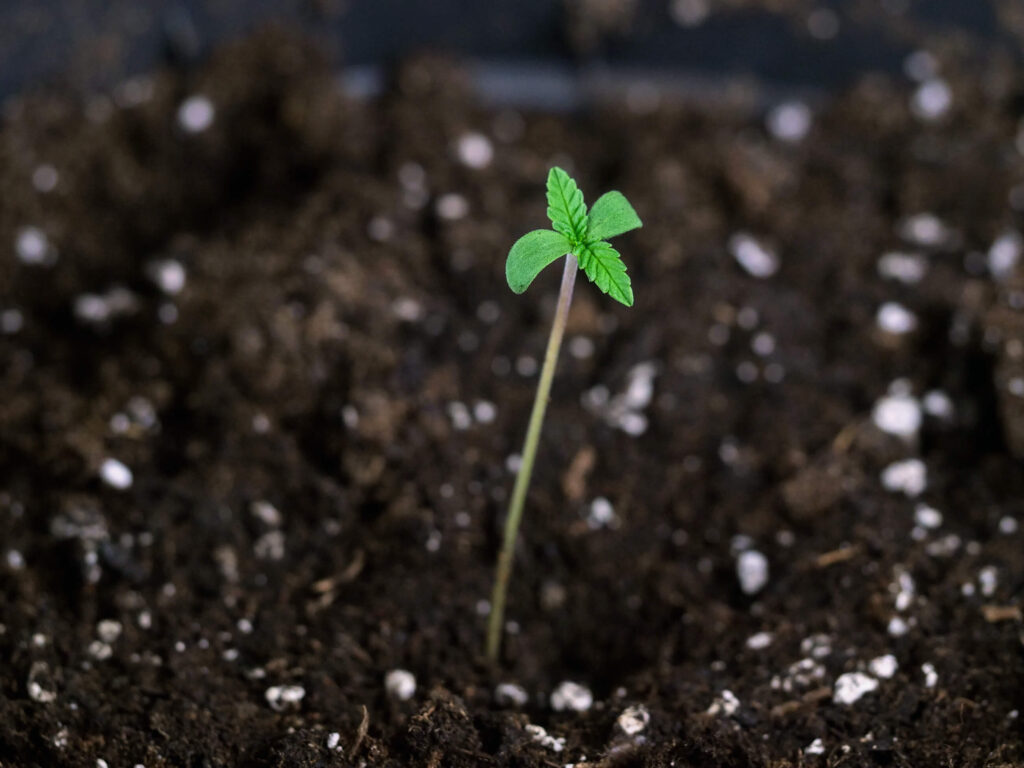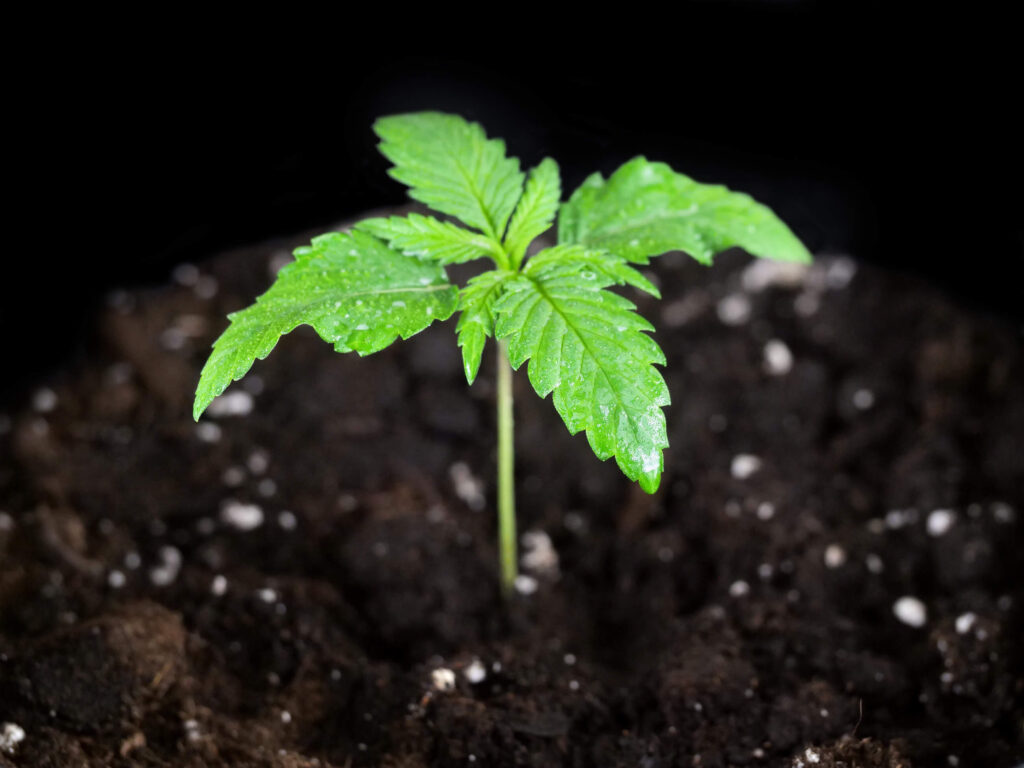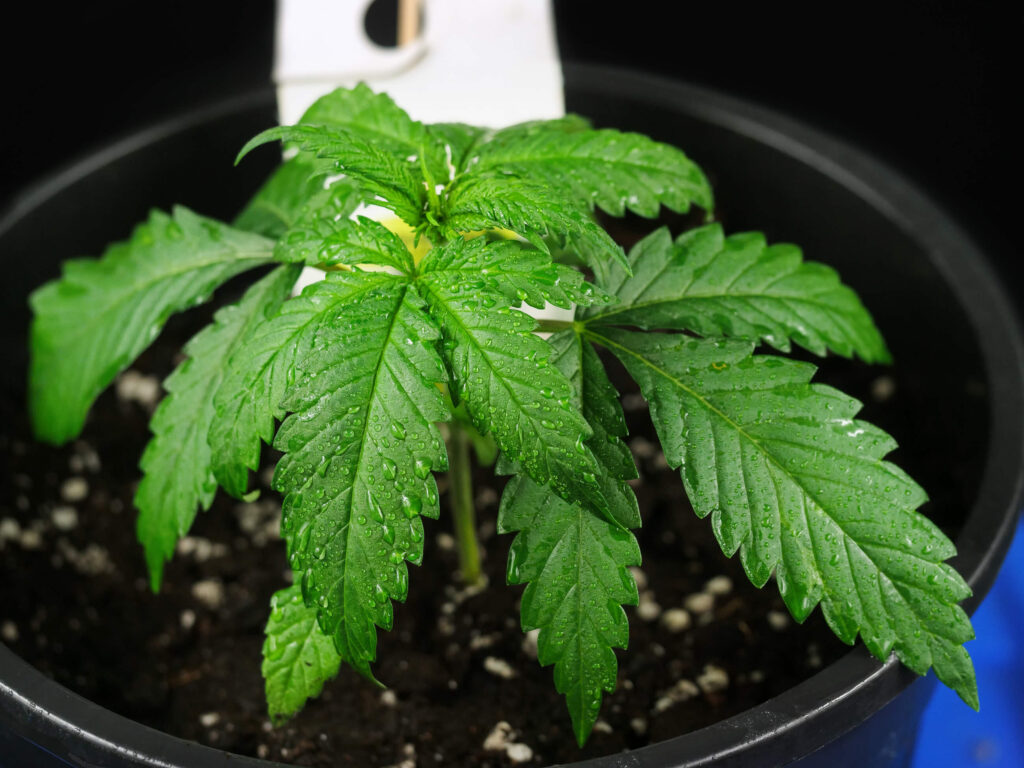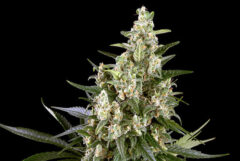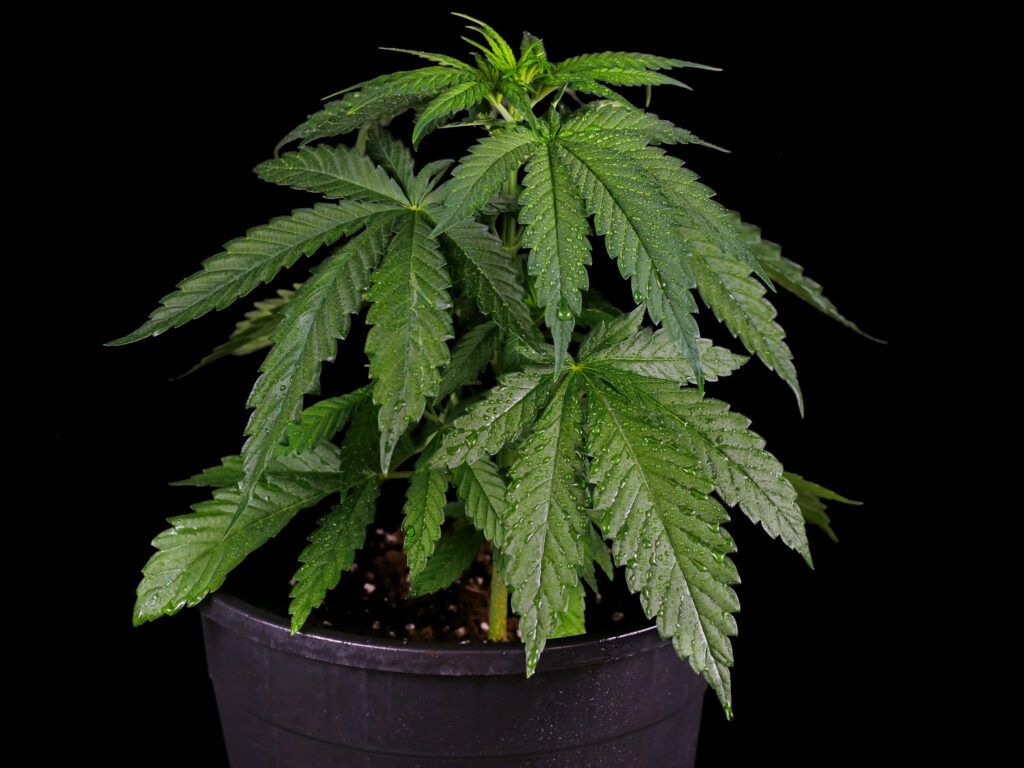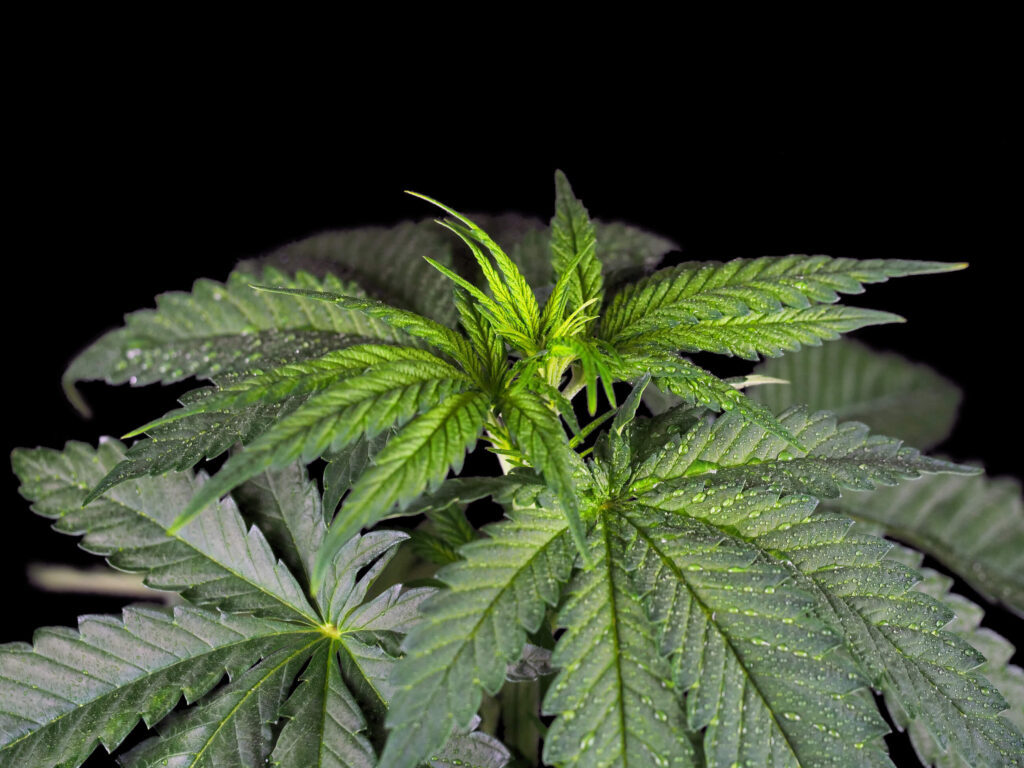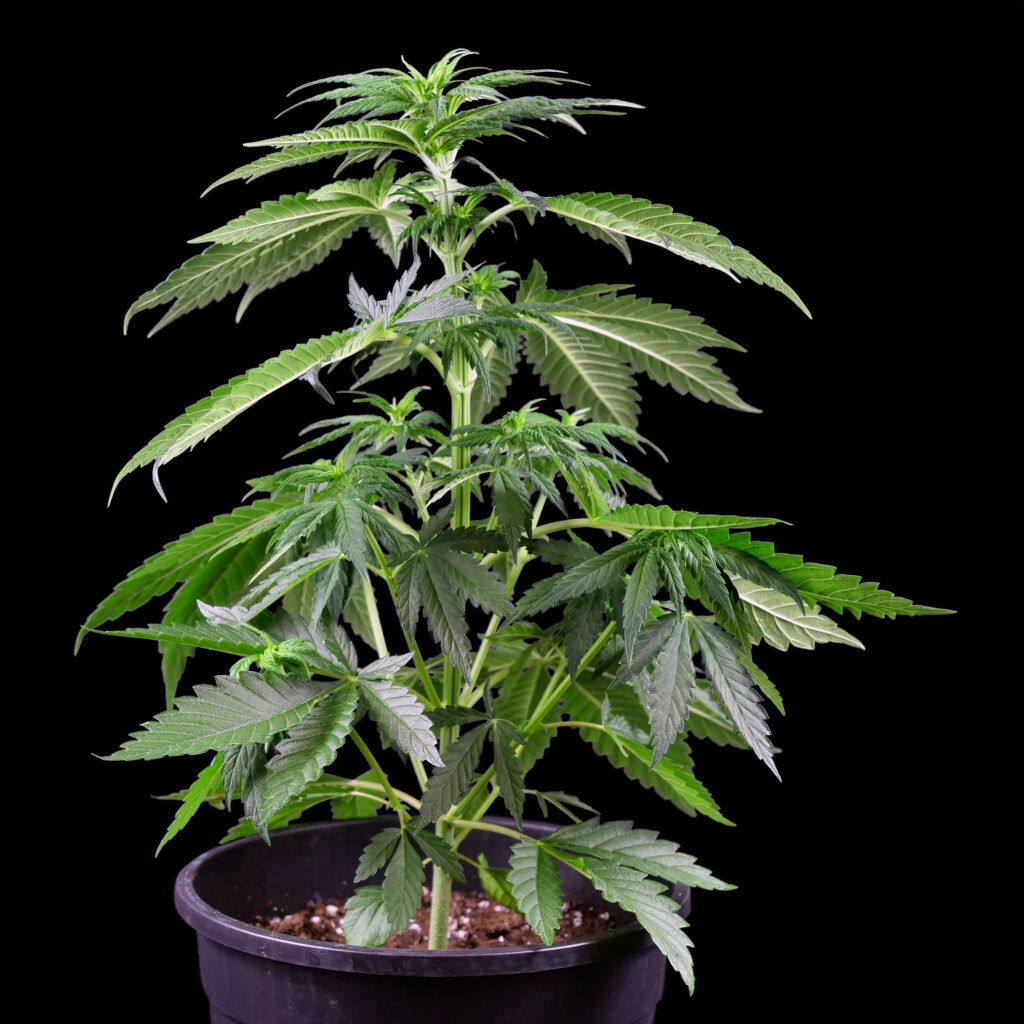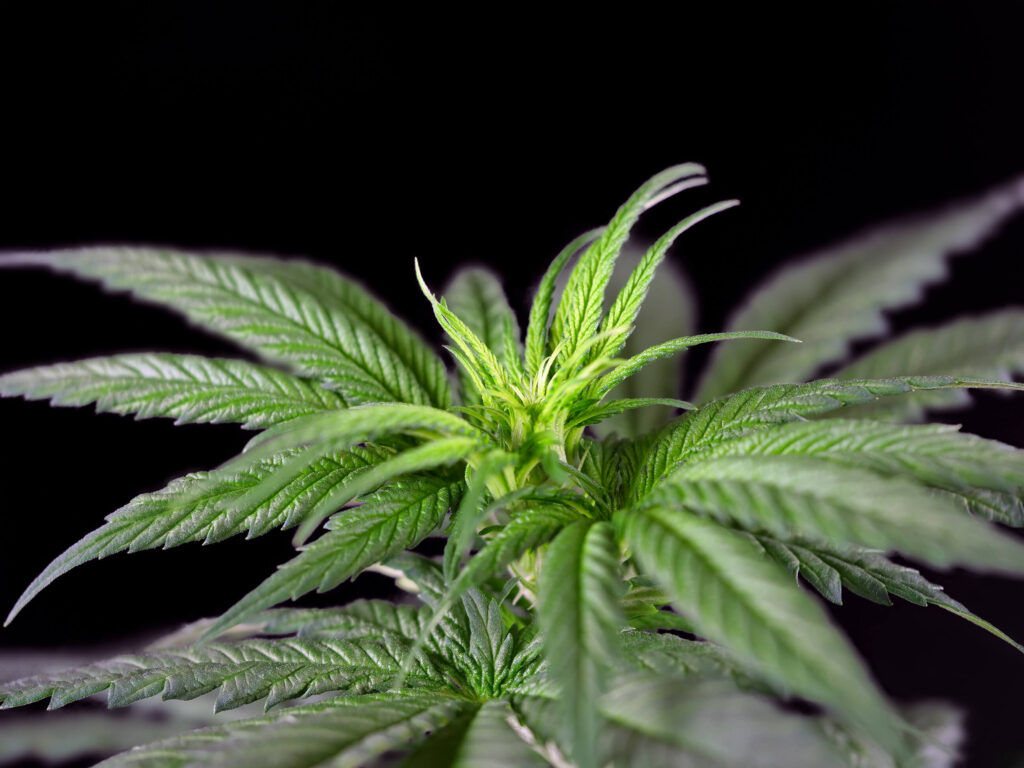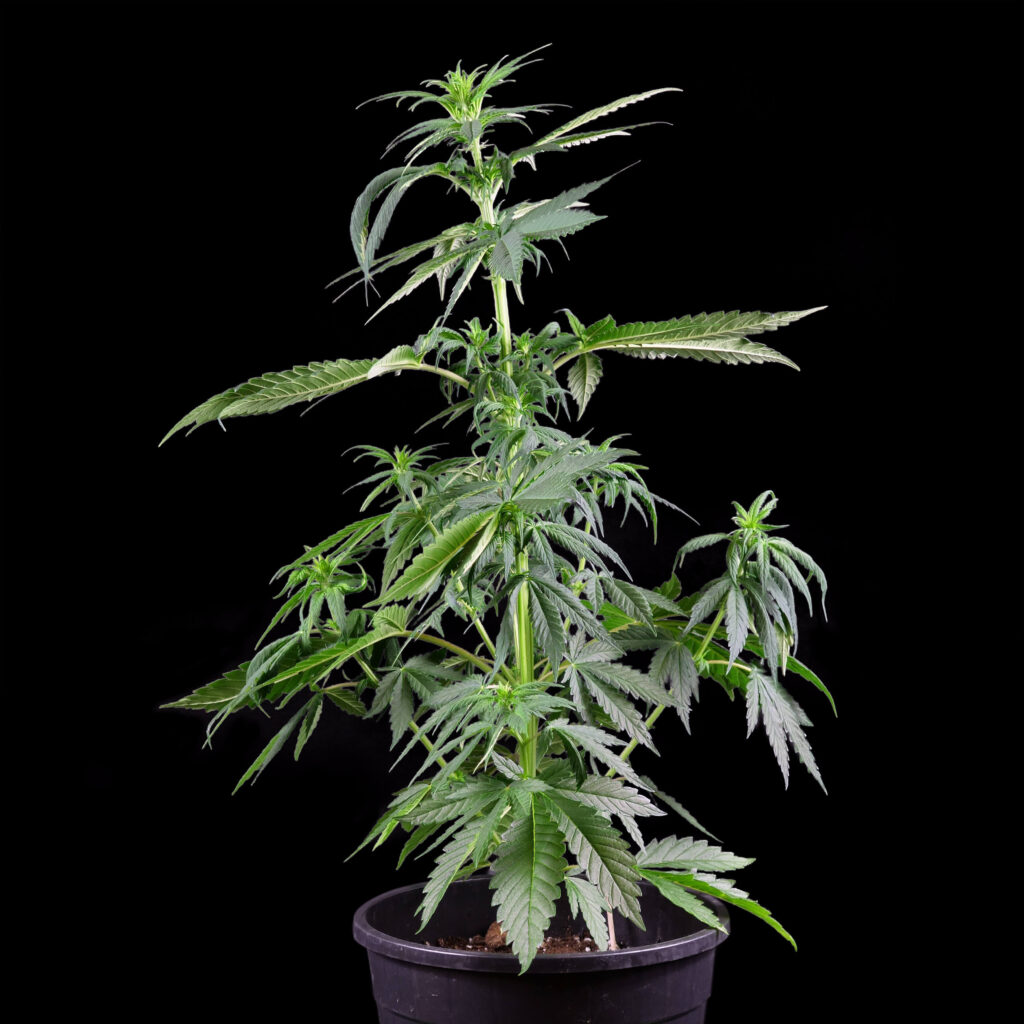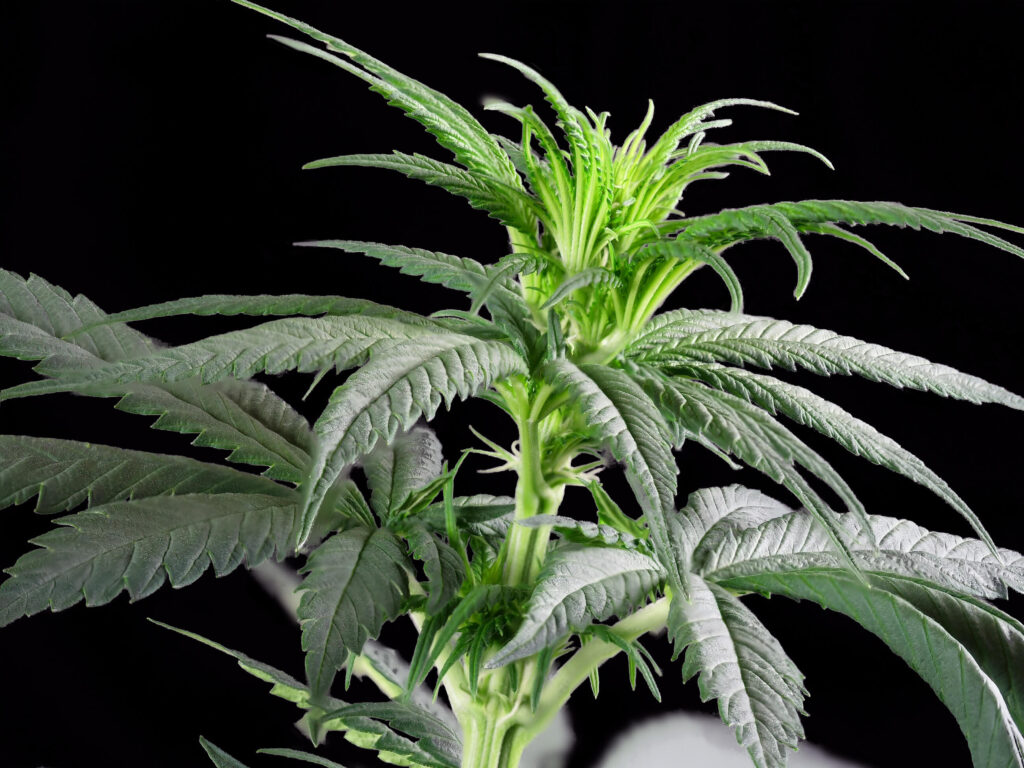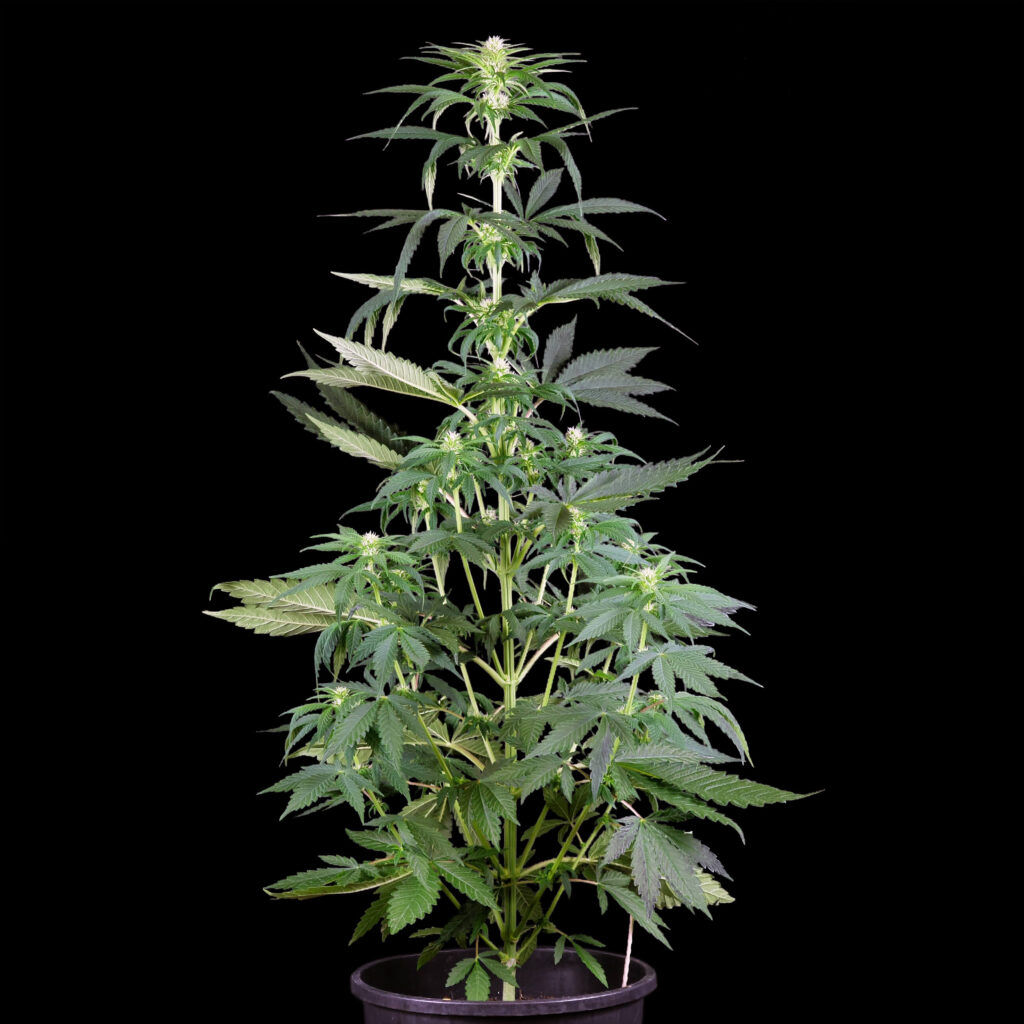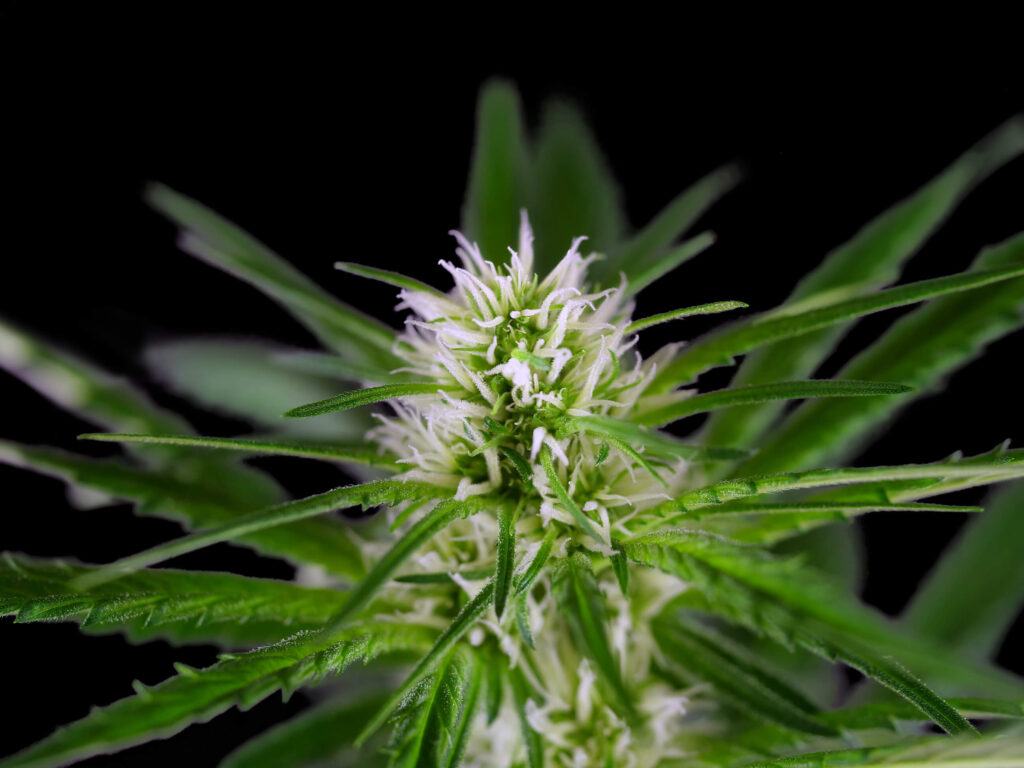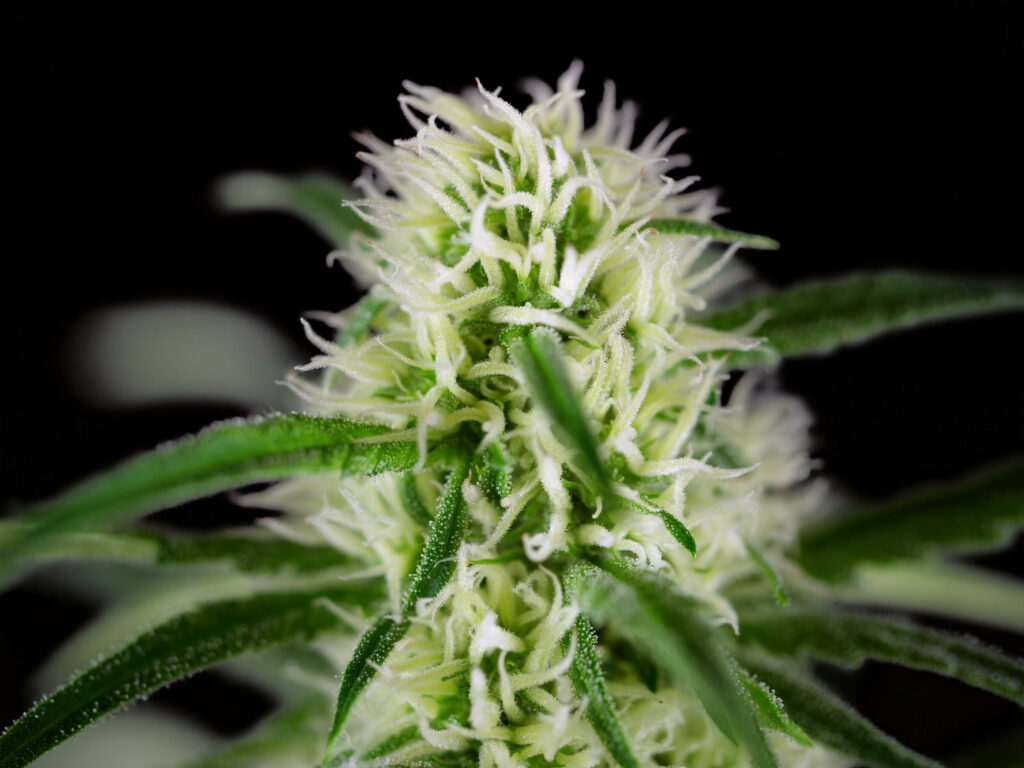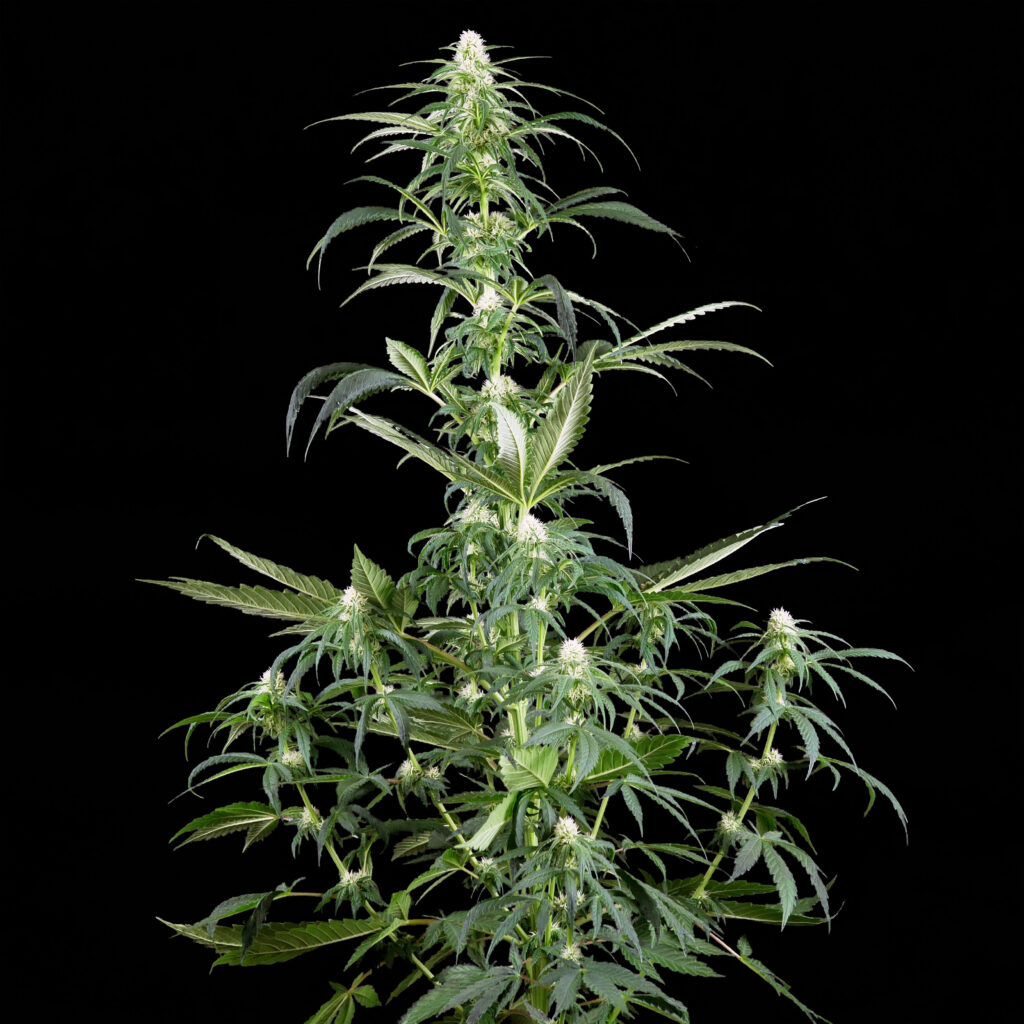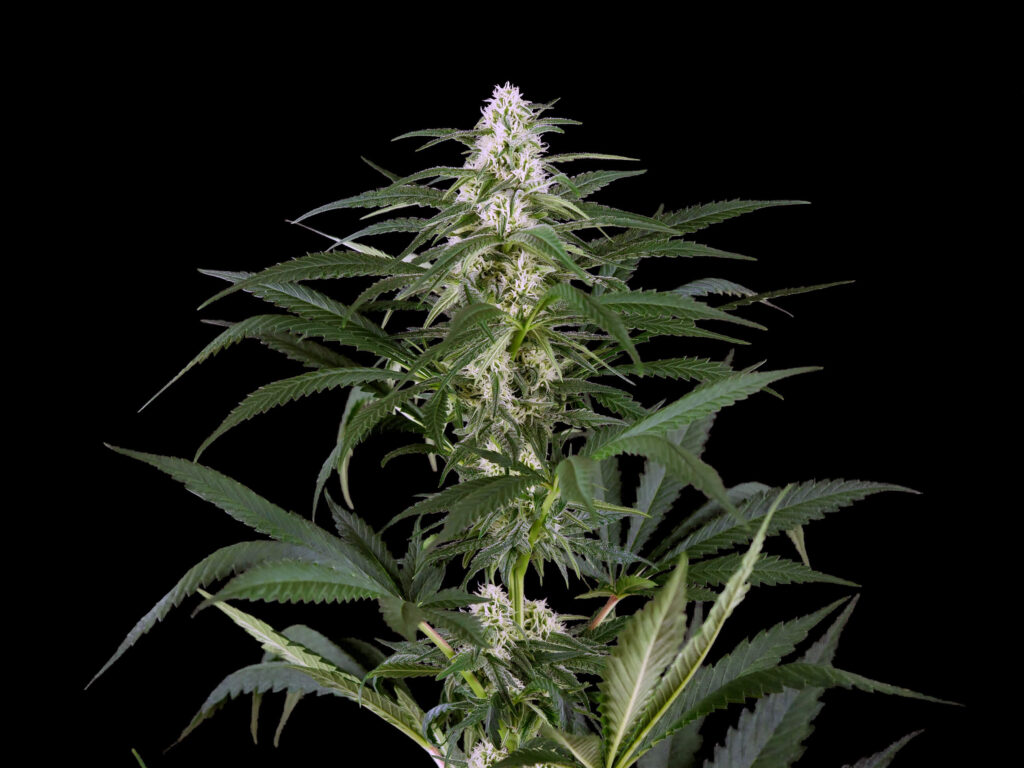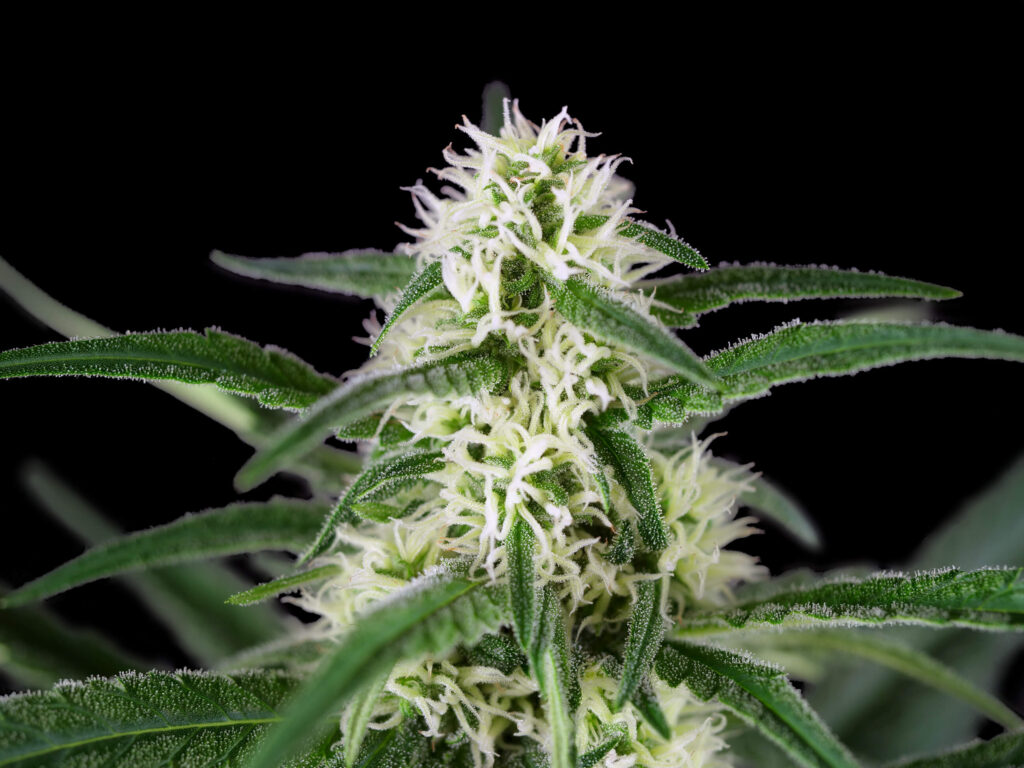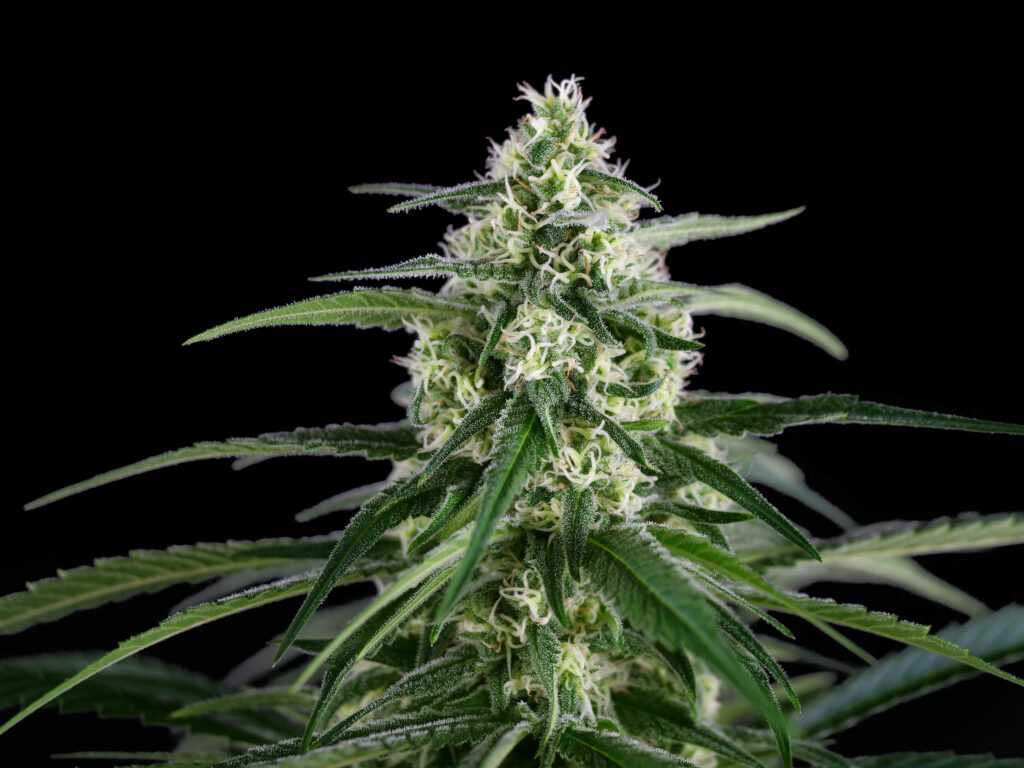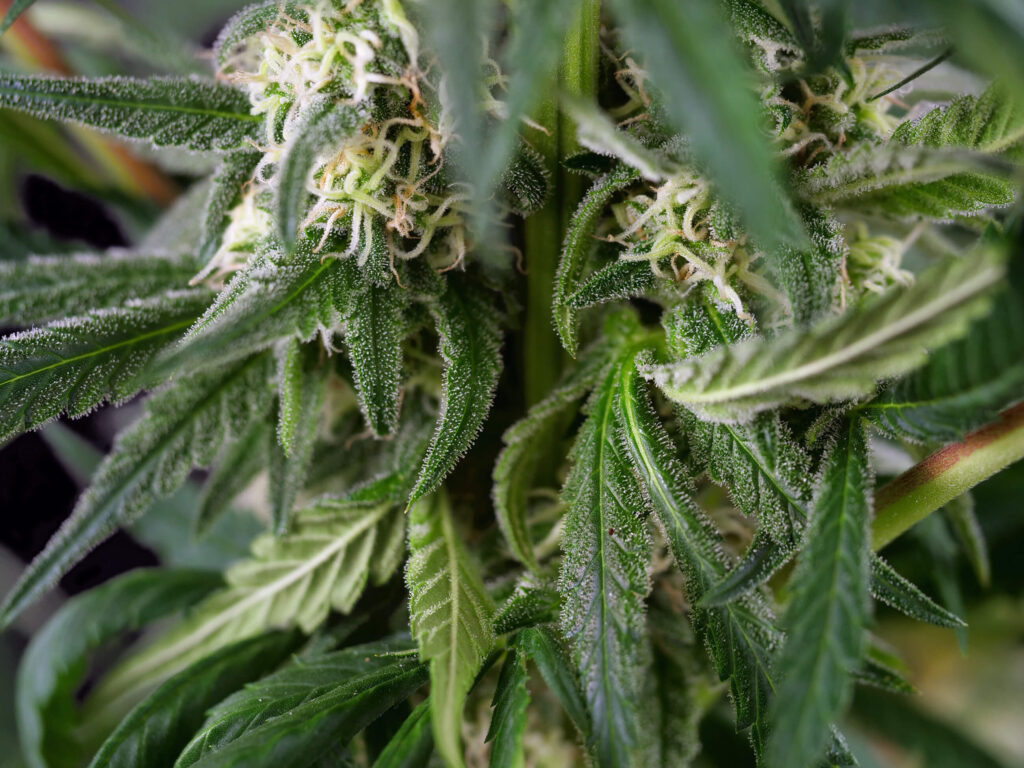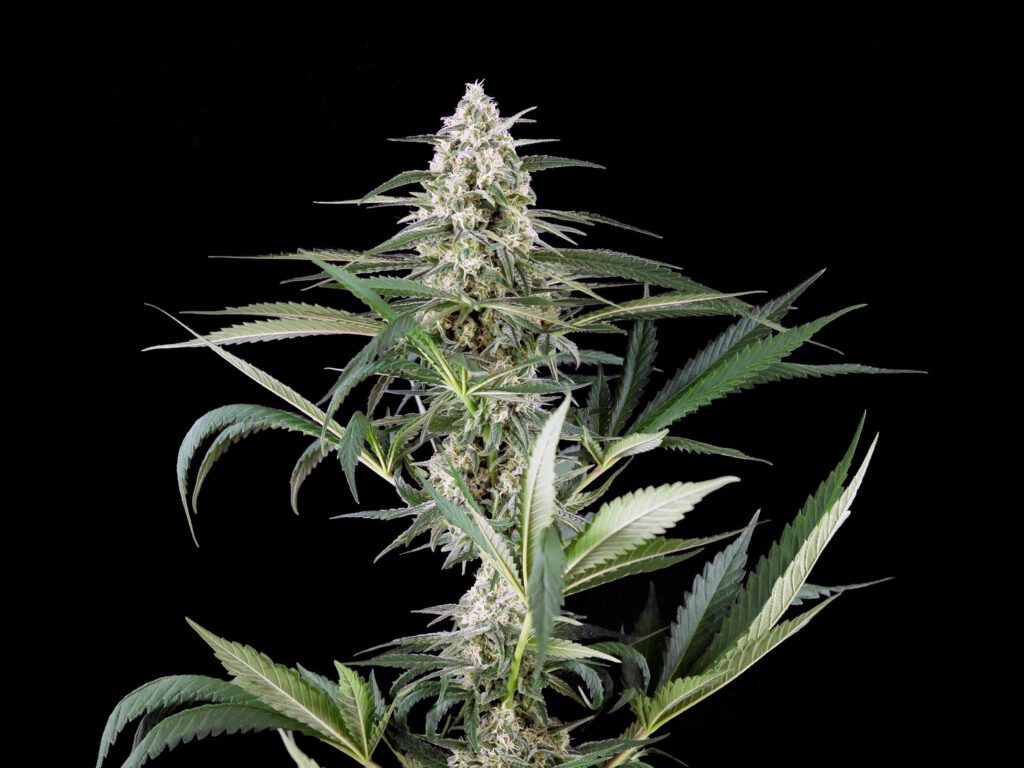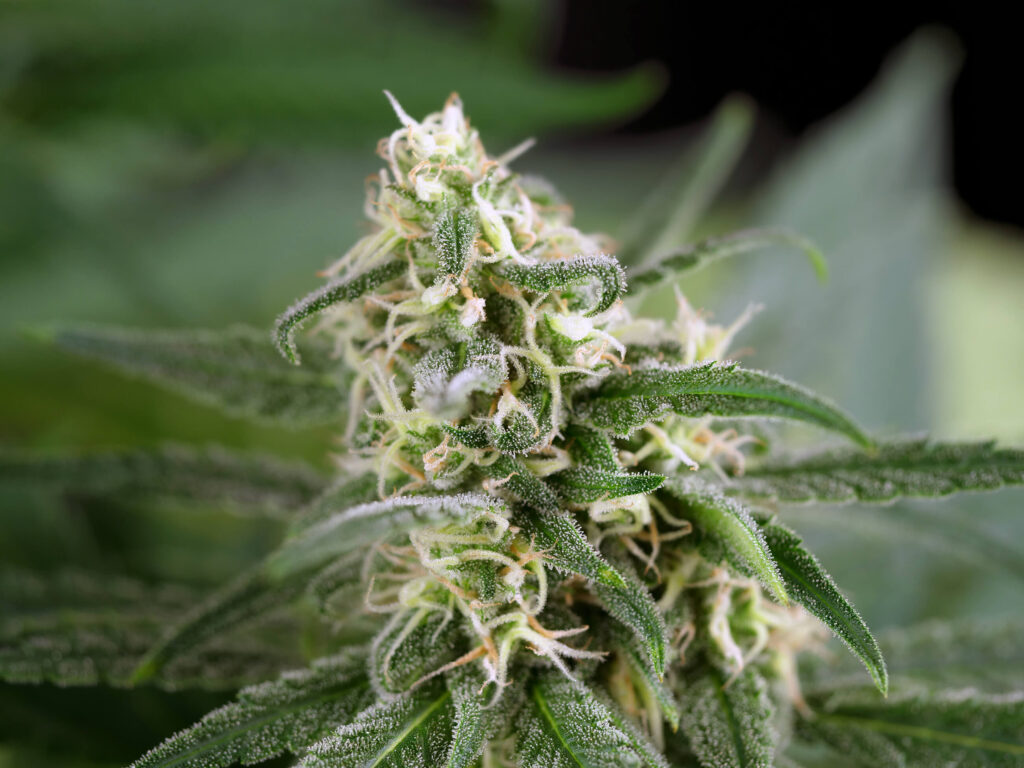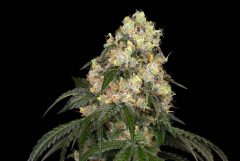In this report, we’ll break down our time with White Gorilla Haze Feminized. This 65/35 sativa-dominant hybrid surprised us with its compact size and impressive yield which, when combined with its lack of odour, make it a dream for discreet growers. No matter your setup, we know you’ll be as impressed with the strain as we were.
Flowering stage: 64 days
Total time, seed to harvest: 92 days
Final height: 87 cm
Final yield: 84 grams
THC content: 23.4%
To give our White Gorilla Haze cannabis plant the best chance at success, we grew it under a 1000W Philips Green Power HPS lamp in an 8-litre plastic pot filled with BAC Lava mix. Our light was initially set to an 18/6 schedule and the grow space was kept at a regular 23°C during daylight hours and dropped down to 21°C when the light switched off. To start, the relative humidity was set to 65%, though this would be gradually lowered as the plant matured.
Germination & seedling
As always, we first needed to germinate our White Gorilla Haze cannabis seed before we could do anything else. For this, we made use of the tried-and-tested paper towel method as it’s the fastest and most reliable method. What’s better is that it requires no extra special equipment.
To start, we folded a few paper towels, placed them on a plate, and sprinkled them with several millilitres of water until they were damp the whole way through, but not dripping wet. Next, we placed our seed on top and covered it with another damp paper towel. This was all then placed inside of an open plastic bag and left in a warm place.
After about a day, we saw that the seed had cracked open and the taproot was now sticking out about a centimetre. Next, we planted the seed—with the taproot pointing down—into a Rockwool cube and put that underneath a 600W lamp.
We did not give any extra water or nutrients at this point as these seedlings are still very fragile and too much light, heat, water, or even nutrients can kill them before they’ve sprouted. After three days, we gave our plant its very first feeding with 100 ml of pH-balanced water (pH 6.2; EC 0.8) mixed with a dose of rooting hormone.
By the end of week one, our seedling was standing 6 cm tall with an incredibly slim stem supporting some relatively small cotyledons at the top. By now, we were watering daily with 100 ml of water mixed with Bio Grow liquid nutrients (pH 6.0; EC 1.4).
Vegetation
At the beginning of week two, our plant was 10 cm tall and had grown its first set of true leaves. At the start of the week, though we moved our seedling into an 8-litre plastic pot and put it under our 1000W lamp. With growth speeding up, we doubled the volume of water to 200 ml per day.
In week three, our plant grew to 13 cm and sprouted a second set of leaves. Growth was very slow at this point and the internodal spacing was fairly tight. Regardless, we would switch to flowering and our plant would need all the resources it could get so we increased the volume of water to 400 ml each day.
Also in week three, we hung satchels of Neoseiulus californicus and Amblyseius swirskii from the lowest branches. These tiny white packets are each filled with hundreds of tiny critters that have developed a symbiotic relationship with cannabis plants. These tiny helpers don’t harm cannabis but hunt down and eat pests like spider mites and thrips which can destroy even the healthiest plant. These are replaced every four weeks to ensure a fresh supply.
Flowering
At the beginning of week four, we switched to flowering by switching our lights to a 12/12 schedule. Additionally, we began daily feedings of our plant with 800 ml of water mixed with Bio Flower liquid nutrient (pH 6.0; EC 1.8). By the end of the week, our plant had doubled in size to 26 cm tall with several new sets of leaves. Internodal spacing was still very tight, though slowly growing with the plant.
In week five, our plant saw another major growth spurt gaining 17 cm to reach a new height of 43 cm. Lateral branches were still small and growing slowly but coming along nicely. By now, the internodal spacing had grown significantly. With our plant about to start flowering any day now, we once again increased the water to 1000 ml per day. Lastly, we reduced the relative humidity to 60%.
Week six saw even more explosive growth with our plant climbing to 60 cm tall. On top of that, we began to see the very first signs of flowering as tiny white pistils began popping up at the inner nodes and along the tops of branches. By now, some of the lower branches were about half the height of the plant and were growing vertically, close to the stem, in typical sativa fashion.
In week seven, our plant underwent its single largest growth spurt gaining 18 cm to reach 78 cm tall. This week, the plant entered full bloom as new floral growth exploded from every flowering site. These small preflowers were little more than clusters of white hairs, but they developed further daily. With much more growth to come, we upped the water to 1500 ml per day.
Week eight saw our plant’s last burst of vertical growth as it reached 85 cm. This slowdown in vertical growth was perfectly mirrored by the increase in flower development as the main cola was rapidly taking shape. At this point, our plant was short like an indica, but slender and tight like a sativa highlighting this strain’s varied lineage. Finally, this week saw us lower the humidity to 55% to help combat mould.
In week nine, our plant put all of its energy into flowering and every flowering site had exploded in just a few short days. The buds were increasingly dense and sticky, though lacking much of a distinct odour.
In week ten, our plant reached its maximum height of 87 cm as the main cola expanded outwards and upwards. By now, were seeing the very first few pistils slowly change colour showing that harvest was gradually approaching. As the main cola continued to grow, the plant was starting to lean slightly so we tied it to a wooden support rod to get things upright.
Week eleven saw more pistils slowly changing and the buds continued to fatten up nicely. There was nothing left to do at this point but wait for nature to run its course as our plant finished ripening.
Week twelve was more of the same; no new vertical growth, and more pistils turning orange. By now, the buds had mostly stopped developing and it was very time to harvest.
Finally, at the end of week thirteen, we harvested our White Gorilla Haze feminized cannabis plant.
Harvest
To harvest our White Gorilla Haze cannabis plant, we began by cutting it down at the base and removing all of the fan leaves. Next, we hung the plant upside-down to dry in a climate-controlled space (15.5°C; 50% humidity) until the smaller branches were dry enough to snap when bent; typically 10-20 days.
Once the plant was dry enough, we removed the buds and trimmed off any remaining leaves. Trimming these buds was fairly time-consuming as they were incredibly leafy with dozens of long, slender sugar leaves sticking out several centimetres from every flower. This, combined with this strain’s incredible resin production, makes trimming White Gorilla Haze more of a chore than some other strains.
Once the buds were cleaned up, they were placed into glass jars for curing. For the first 24 hours. These jars were left open to allow a majority of the remaining moisture to evaporate. After a day, the jars were sealed and “burped” several times a day. Over the next few weeks, the frequency of burping was reduced to once per day.
Typically, the entire curing process takes 4-6 weeks and is key for creating a smooth flavour in your final product.
In the end, we were able to harvest a respectable 84 grams of dried flower with a seriously impressive THC content of 23.4%.
Terpene profile
While growing, White Gorilla Haze plants have a subtle aroma combining a sharp haze smell with notes of coffee, citrus, and pine. Once cured, these scents come out in full force and are also present in the flavour of the finished product. While the smell is minimal during growing and drying, the flavour of the buds in the end is potent and distinct in all the best ways.
Within moments of sampling the product, we were hit with an intensely uplifting cerebral high which was accompanied by a burst of energy. As a 65% sativa, this isn’t surprising but it’s always nice when you can get this effect from such a small plant. After some time, the initial wave of energy subsided to give way to a more relaxed body high from the strain’s indica genetics.
Overall, this strain is ideal for daytime activity or heavy socialising but not the greatest choice for a nightcap at the end of a long day.
The outcome
We really enjoyed our time growing White Gorilla Haze and the final product has quickly become a new favourite.
This compact, fast-flowering strain has minimal aroma and is an ideal choice for growers who value discretion. However, more daring gardeners will find that this strain is also an ideal choice for a range of grow techniques like screen of green, sea of green, or mainlining. Thanks to its ease of growth and versatility, any grower should consider fitting this strain into their next grow.
- Disclaimer:Laws and regulations regarding cannabis cultivation differ from country to country. Sensi Seeds therefore strongly advises you to check your local laws and regulations. Do not act in conflict with the law.







